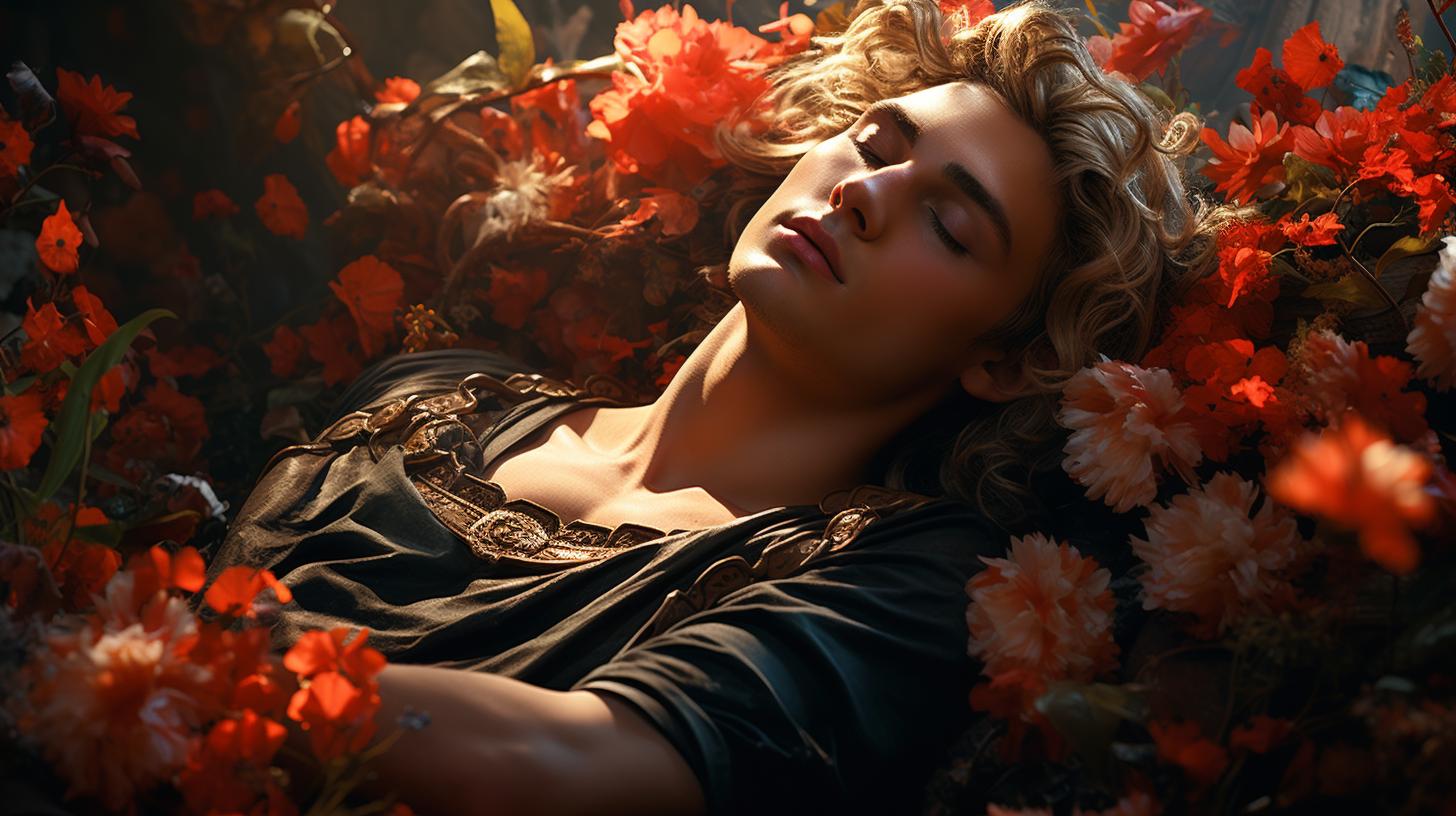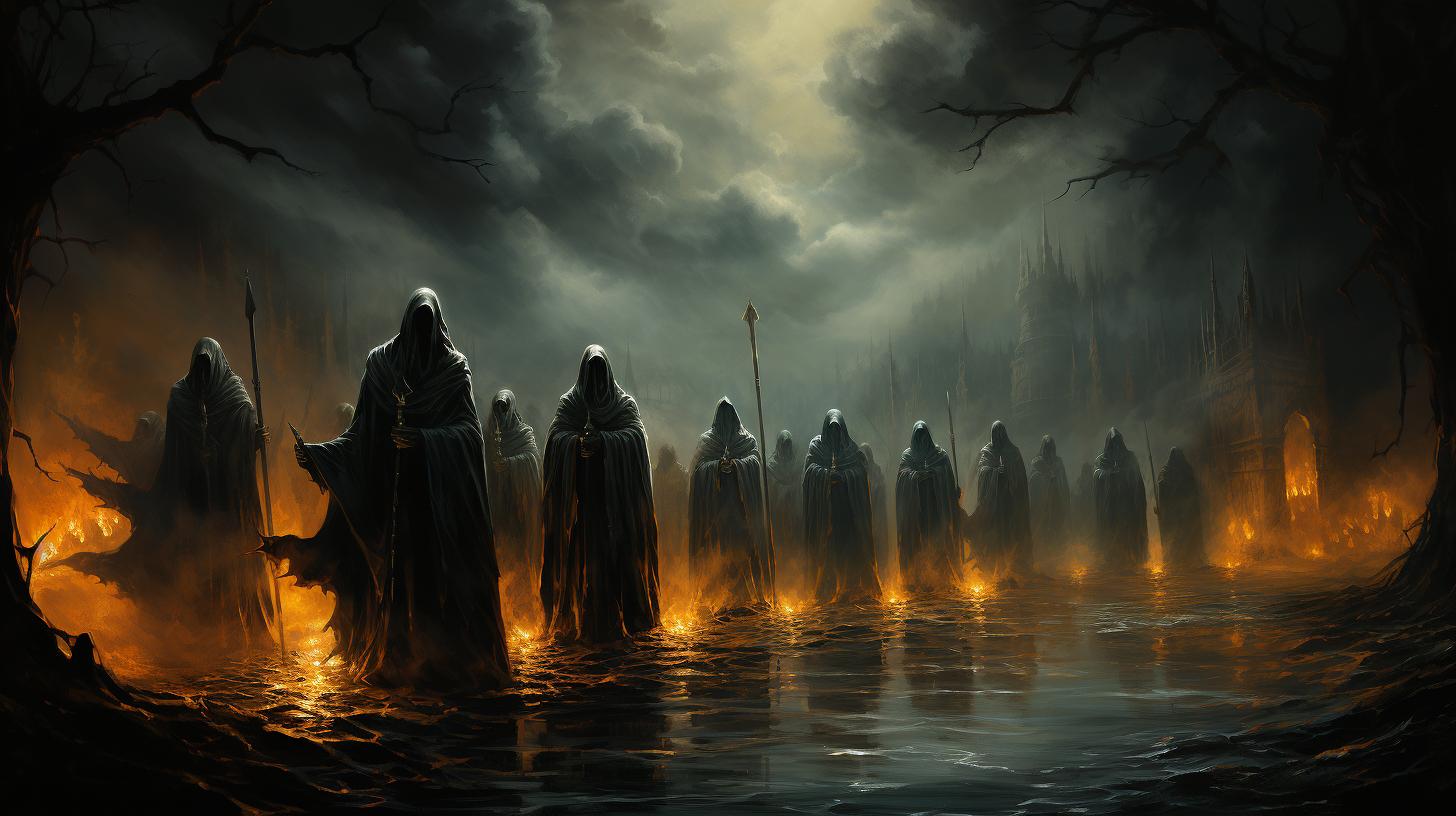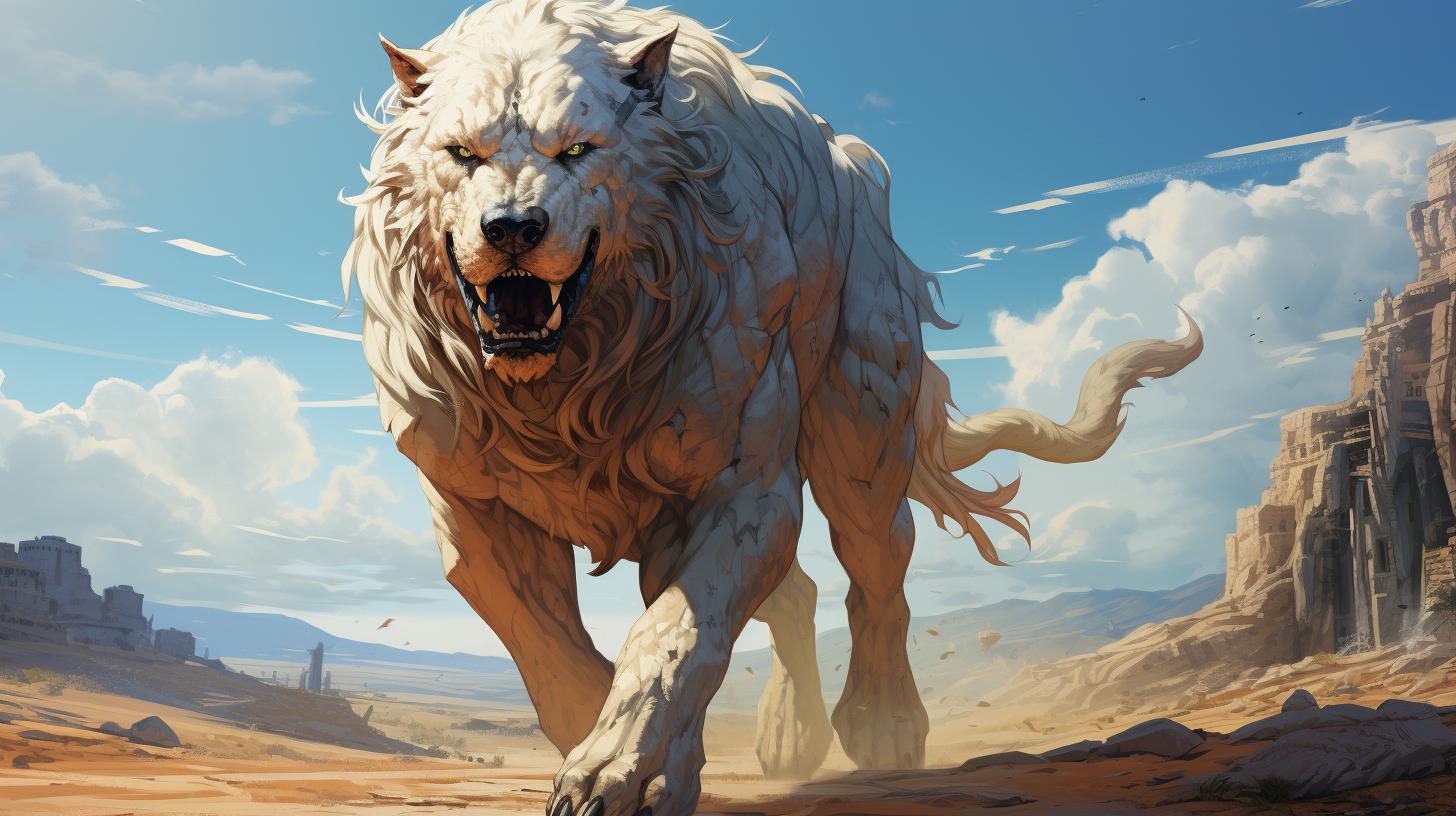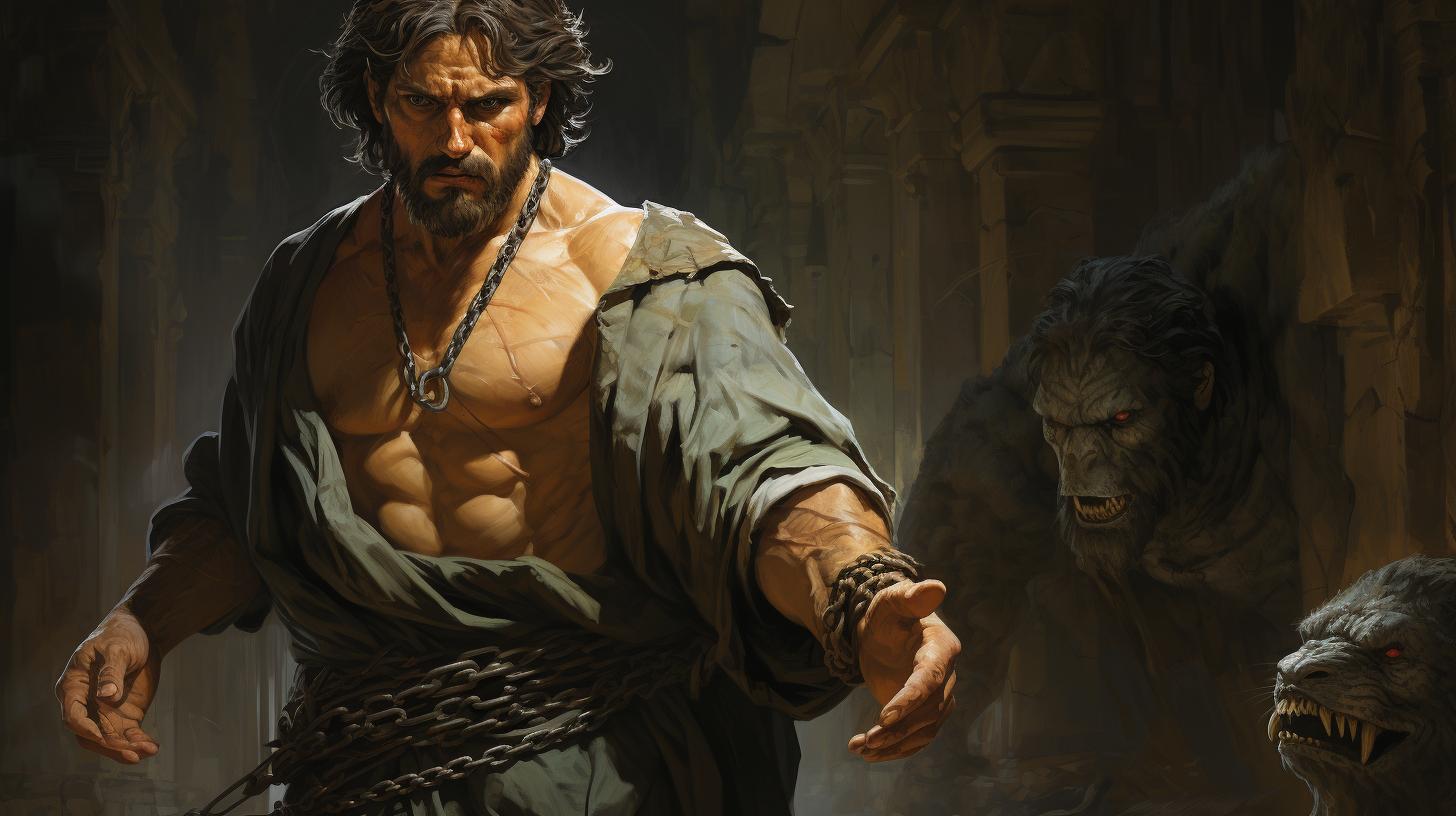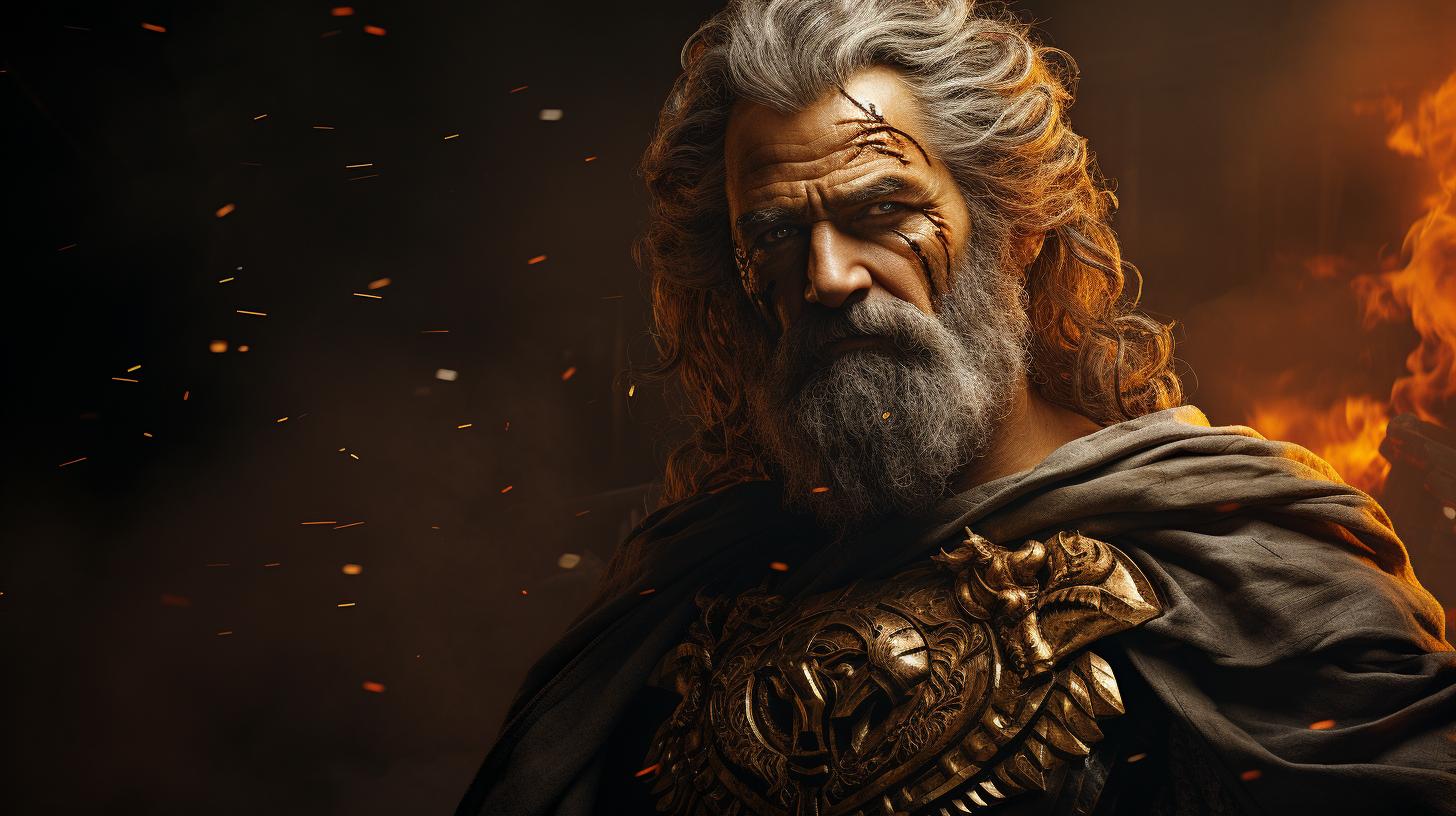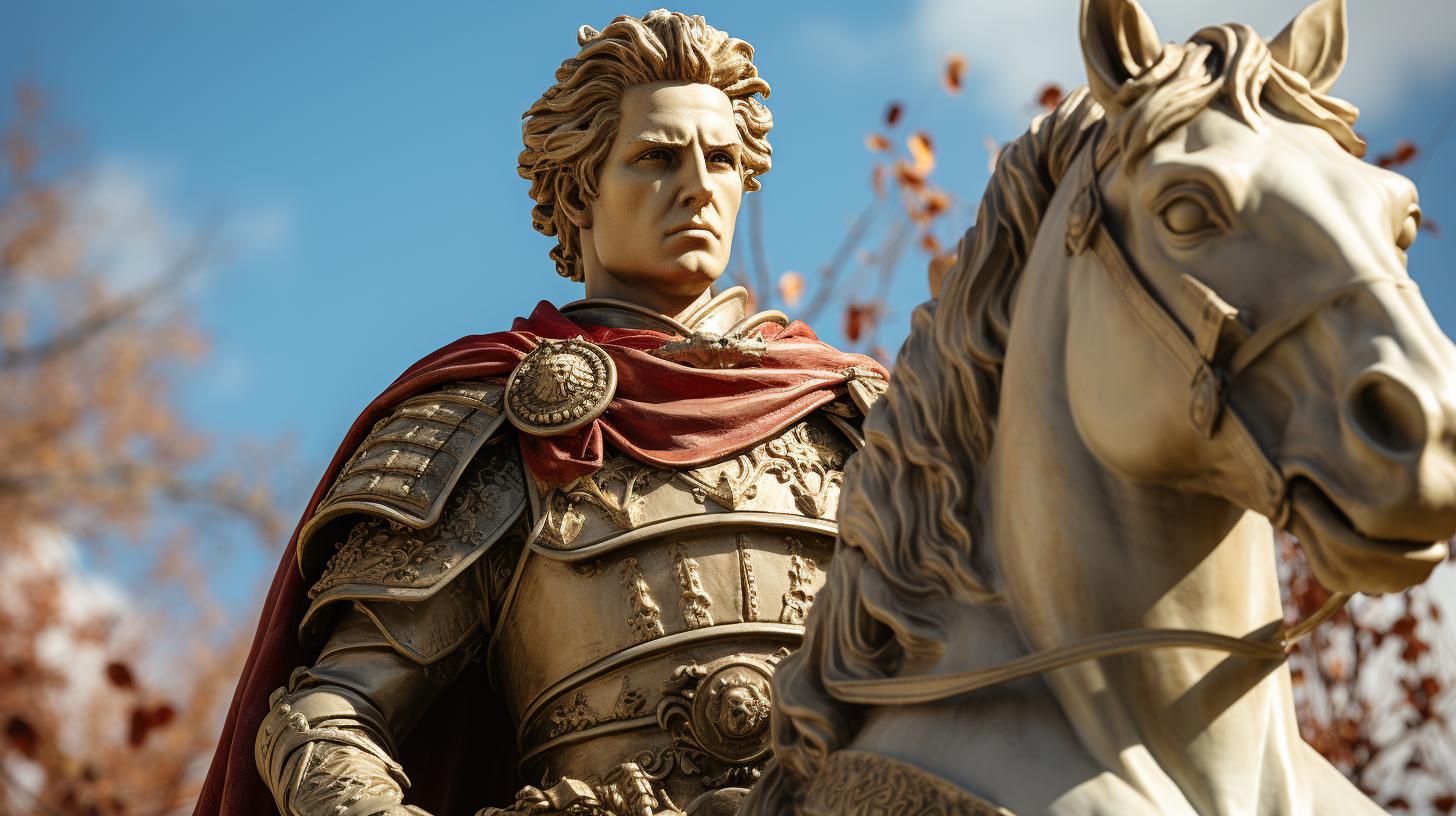The Eternal Youth and Rebirth of Adonis in Greek Mythology
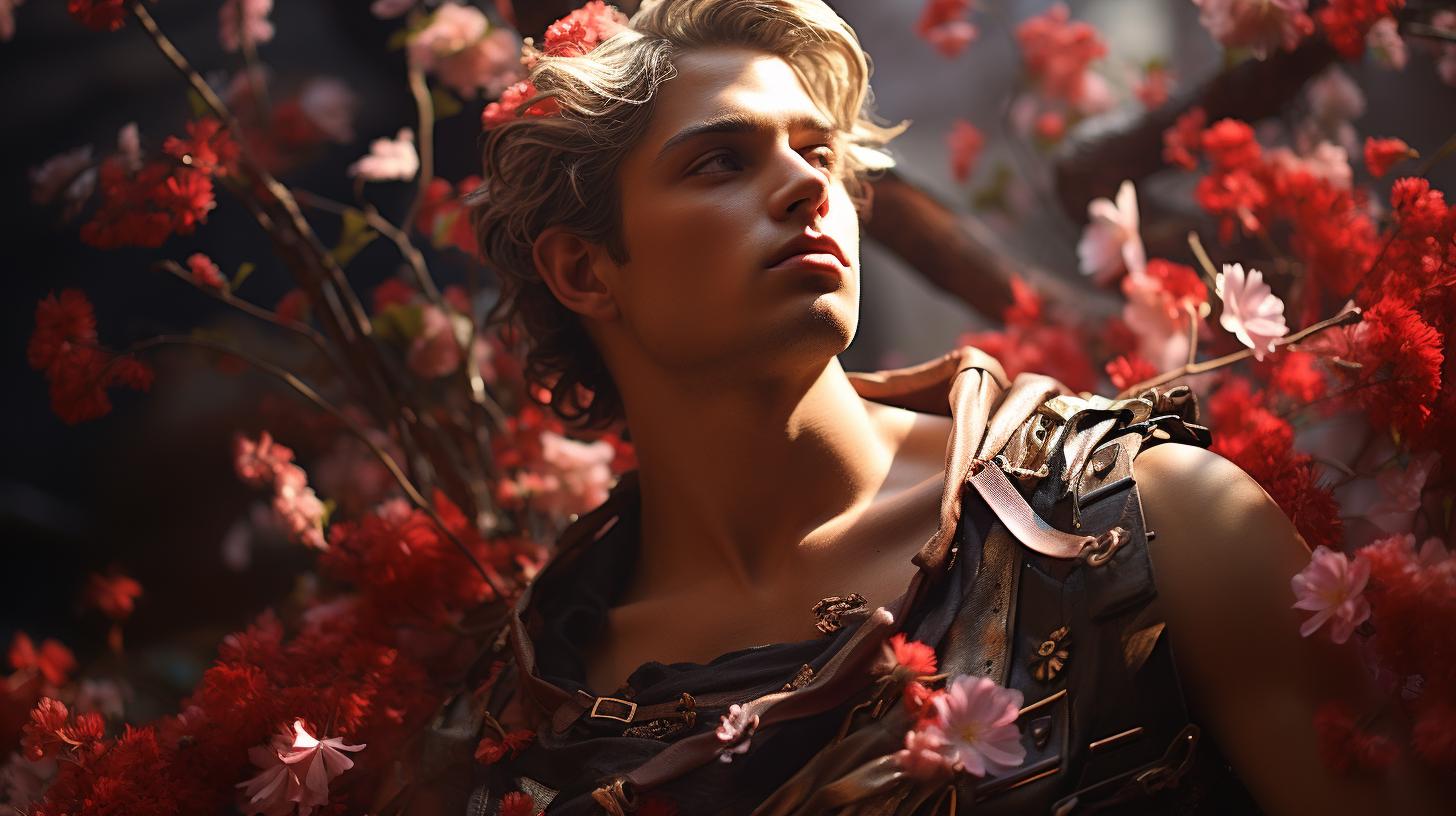
The Greek myth of Adonis centers around a deity known for youth and rebirth. Adonis was considered the god of plants, with a cycle of life that involved dying and being reborn.
His worship was mainly carried out by women, as seen in archaeological findings on the island of Lesvos. Adonis’ story begins with his incestuous birth, conceived by the king Theias of Smyrna and his daughter Myrrha.
This short introduction touches on the key aspects of Adonis’ myth without delving deeply into details.
The Birth of Adonis
Adonis, a central figure in Greek mythology, has a complex and intriguing origin story. The tale begins with an unsettling event: the incestuous union of Theias, the King of Smyrna, and his daughter Myrrha.
Myrrha, driven by a forbidden desire for her own father, seduced him in darkness and became pregnant with their child.
The Incestuous Union of Theias and Myrrha
The incestuous relationship between Theias and Myrrha is a dark and disturbing element of Adonis’ birth story. Myrrha’s forbidden love for her father led to this illicit union, which sets the stage for the tragic events that follow.
The Transformation of Myrrha into a Tree
When Theias discovered the truth about his daughter’s deceit, he was consumed by rage and sought to kill her. To protect Myrrha, the goddess Aphrodite transformed her into a myrrh tree.
This transformation offered Myrrha a form of safety, but it also further entwined her fate with the natural world.
The Birth of Adonis
From the severed tree trunk emerged a beautiful baby boy, Adonis. His birth was both a testament to the depths of human desire and an affirmation of the power of the gods.
Adonis, born out of an abhorrent union, would embark on a life whose cycle would come to embody themes of rebirth, beauty, and tragedy.
Aphrodite’s Obsession with Adonis
Aphrodite, the goddess of love and beauty, became infatuated with the young and attractive Adonis. However, consumed by her own desires, she neglected her divine duties. To address this situation, Aphrodite sent Adonis under the care of Perséfone, the Queen of the Underworld.
Adonis under the Care of Perséfone
During his time with Perséfone, Adonis captured her heart, and she refused to return him to Aphrodite. This led to an intervention by Zeus, who decided on a compromise.
Adonis would spend four months of the year with Perséfone, four months with Aphrodite, and the remaining four months alone to learn self-sufficiency.
Zeus’ Decision on Adonis’ Time Allocation
Zeus’ intervention ensured a balanced arrangement for Adonis, allowing him to experience the love and care of both goddesses while also developing his independence.
This decision marked the cyclic nature of Adonis’ life, as he alternated between the realms of Aphrodite and Perséfone.
Adonis, the Epitome of Beauty
Adonis, a central figure in Greek mythology, was not only known for his captivating allure and desirability, but also considered to be the epitome of beauty itself. His youthful charm and extraordinary physical appearance made him irresistible to all who crossed his path.
Adonis’ Allure and Desirability
Adonis possessed an enchanting aura that effortlessly attracted both mortals and deities alike. With his perfectly chiseled features, captivating smile, and radiant demeanor, he became the embodiment of aesthetic perfection. His lustrous hair cascaded down his shoulders, framing a face that boasted flawless symmetry and a bewitching gaze that could ensnare the heart of anyone who dared to look into his eyes.
His physique was that of a god – strong and harmonious, with every muscle sculpted to perfection. Adonis moved with a grace and elegance that mesmerized all who beheld him, making him the subject of countless paintings, sculptures, and poems throughout the ages.
Adonis’ allure extended beyond his physical attributes, for he possessed a magnetic charisma that emanated from his very being. With a charismatic charm and a wit that matched his beauty, Adonis had the power to captivate even the most hardened hearts.
People were drawn to him, eager to bask in his presence and revel in his company.
Aphrodite’s Profound Love for Adonis
Aphrodite, the goddess of love and beauty, was particularly smitten by Adonis. She found herself helplessly consumed by an intense and profound love for the young deity. Aphrodite’s heart fluttered at the mere sight of him, her every thought consumed by his enchanting presence.
Unable to resist her desires, Aphrodite showered Adonis with countless blessings and gifts, hoping to capture and keep his affection. She adorned him with luxurious garments, fragrant oils, and exquisite jewels, seeking to enhance his already radiant beauty.
Aphrodite’s love for Adonis was not merely superficial, for she saw in him a kindred spirit. His youth, vibrancy, and constant renewal mirrored her very essence as the goddess of eternal renewal and love.
Adonis became not only her object of desire but also a symbol of the eternal cycle of life, death, and rebirth that defined her divine nature.
However, Adonis’ irresistible charm and Aphrodite’s intense love for him would eventually lead to a tragedy that shook the heavens and the mortal realm.
The Tragic Fate of Adonis
Adonis’ journey takes a sorrowful turn as his disobedience unleashes a dreadful encounter with a fierce boar. Desperate to protect him, Aphrodite intervenes in an attempt to save Adonis from his ill-fated demise.
The tale culminates in a transformation that immortalizes his blood and nectar, leaving a lasting legacy.
Adonis’ Disobedience and Encounter with the Boar
Against the warnings of Aphrodite, Adonis ventures deep into the forest, crossing paths with a formidable boar that refuses to flee. Ignoring the danger, Adonis confronts the beast, resulting in a tragic outcome.
The boar, unbeknownst to him, embodies the god Ares in disguise, driven by jealousy towards Aphrodite’s affections for Adonis.
Aphrodite’s Desperate Attempt to Save Adonis
Upon hearing Adonis’ anguished cries, Aphrodite rushes to the forest, finding him on the brink of death. She pours nectar on his wounds and sings laments to ease his suffering, but her efforts prove futile.
Adonis meets his demise, succumbing to the boar’s fatal blow, bringing profound grief to Aphrodite and the world.
The Transformation of Adonis’ Blood and Nectar
In the wake of Adonis’ tragic end, the nectar poured by Aphrodite transforms into vibrant red anemones, symbolizing the eternal sorrow and beauty that surround his memory. Additionally, his blood merges with the earth, giving rise to the Adonis River, known as the Nahr Ibrahim on the shores of Lebanon, forever immortalizing his presence in the natural world.
Adonis in the Underworld
After Adonis met his tragic end, he was received in the Underworld by Perséfone, the Queen of the Dead. His arrival brought joy to the realm of the underworld, as his beauty continued to captivate even in death.
Adonis’ Reception by Perséfone
Perséfone, deeply moved by Adonis’ fate, welcomed him with open arms. She recognized his charm and admired his youthful spirit. Adonis found solace in the companionship of Perséfone and the other souls dwelling in the realm of the dead.
Aphrodite’s Journey to Retrieve Adonis
Aphrodite, consumed by grief and longing for her beloved Adonis, embarked on a journey to the Underworld. Determined to bring him back to the world of the living, she sought the support of Zeus, the mighty ruler of the gods.
Zeus’ Final Decision on Adonis’ Residence
Upon Aphrodite’s plea, Zeus intervened and made the final decision regarding the residence of Adonis. To ensure fairness and balance between the realms, Zeus ordained that Adonis would spend half of the year with Aphrodite, symbolizing life and the blooming of nature, and the other half of the year with Perséfone, representing death and the dormant state of the earth.
This alternating arrangement became a perpetual cycle, reflecting the eternal cycle of life, death, and rebirth in the myth of Adonis. It also symbolized the interconnectedness of various realms and the delicate balance maintained by the gods.
The Symbolism of Adonis’ Life and Death
Adonis, the central figure in Greek mythology, holds significant symbolism in his life and death. His story represents themes of rebirth and renewal, highlighting the cyclical nature of existence.
Adonis epitomizes the eternal cycle of life, death, and rebirth, mirroring the seasonal changes of nature.
Adonis as a Symbol of Rebirth and Renewal
- Adonis’ cyclical existence reflects the annual cycles of vegetation, where plants wither and die in the winter only to bloom again in the spring.
- His connection with nature portrays the continuous cycle of growth, decay, and regeneration, emphasizing the transformative power of the natural world.
- Adonis’ ability to die and be reborn symbolizes the eternal cycle of life, offering hope and a reminder that even in the face of death, there is the potential for renewal.
The Mourning of Adonis and the Withering Plants
Adonis’ death is not only mourned by Aphrodite but also represented through the withering plants associated with his mythology.
The demise of Adonis is paralleled through the symbolism of fading plant life.
- The jardines de Adonis, planted by Athenian women, depict the short-lived germination and subsequent death of plants, which mirror Adonis’ own fate.
- The wilting and decay of the hinojo and lettuce in the Festival of Adonis symbolize the lamentation for the loss of Adonis and the transient nature of beauty and life.
In conclusion, Adonis’ myth holds profound symbolism as a representation of rebirth, renewal, and the transient nature of life.
His story reminds us of the cyclicality of existence and the transformative power of nature. The mourning of Adonis and the withering plants serve as symbols of the fragility of life, urging us to appreciate the beauty and vitality that exists in the present moment.
.











